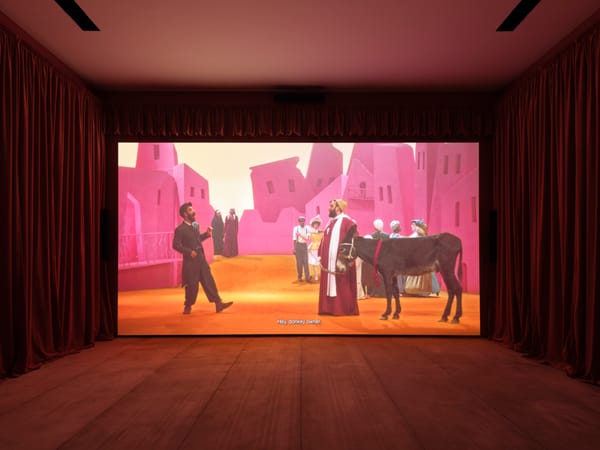Ideas
Book Review: “Future Present: Contemporary Korean Art”

Future Present: Contemporary Korean Art
Edited by Andy St. Louis
Published by Skira editore
Milan, 2023
For many of us, especially the chronically online, generational labels have become an obsession. Once considered the jargon of sociologists and advertisers, the terms “Baby Boomers,” “Gen X,” “Millennials,” “Gen Z,” “Gen Alpha,” and so on, have entered public discourse and reshaped our sociocultural zeitgeist, and not without good reason. In many ways they offer insight into social behavior and political affiliation—older generations tend to have more conservative values, while progressivism is associated with younger folks. Despite being reductive then, these labels can often be indicative of a demographic’s worldview.
Underpinned by this framework, the compendium Future Present: Contemporary Korean Art (2023), edited by Andy St. Louis, spotlights 25 Korean artists, most of whom were born in the 1980s (with a few exceptions from the late ’70s and the early ’90s). After an introduction by St. Louis and two contributing texts by Korean curators, the artists are presented in alphabetical order, each with a single-page summary highlighting their practice and themes through selected works. Drawing on the global phenomenon of Korean culture, also known as Hallyu, St. Louis locates Korean art within the nexus of globalism, providing an overview of artists’ practices and methodologies which have been shaped by each individual’s exploration of culture, aesthetics, history, identity, society, and technology. Throughout the book, these analyses are supplemented by seven pages of artwork imagery per artist, spanning installation views, video stills, and the works themselves, with painting featuring heavily. An appendix also includes each artist’s curriculum vitae, listing their birth year, education, exhibition records, residencies, and which awards they have received.
The two essays that open Future Present, “‘Young’ Artists Living in Korea Today” and “We are the Children of a World Seen Through Many Screens,” respectively written by curators Joowon Park and Hyo Gyoung Jeon, offer insight into the socioeconomic and political conditions surrounding the featured artists through a generational lens. In “‘Young’ Artists,” Park highlights the social trajectory behind the formation of individualistic attitudes shared among the “MZ” generation, a Korean-specific label that lumps together Millennials and Gen Z. On the other hand, Jeon, drawing from her autobiographical account of her engagement with online games, provides a more in-depth analysis of art mediums influenced by digitization. She offers a brief note on the Korean alternative art space, aptly contextualizing the cultural environment and dynamics surrounding these artists in Korea.
St. Louis, Park, and Jeon unanimously agree on the unavoidable influence of technology on this generation of artists, as exemplified by many of the works featured in the book. In her Screenshots series (2016– ), for instance, Hyangro Yoon deconstructs digital imagery and paints the results on a printed canvas of scanned digital art books; while in Heecheon Kim’s Ghost (1990) (2021), which features a voice log in virtual space through a VR headset, he investigates the behavioral and perceptual phenomena between the virtual and the human. These artists, among many others in the book, use technology to inform their artistic languages, positing that it is an essential subject for emerging and midcareer Korean artists to respond to.
Some featured artists, especially those trained in traditional Korean and oriental painting, reference traditional culture and its symbolism, integrating these elements into globalized visual idioms. This is evident in Suki Seokyeong Kang’s installations, wherein her abstract and minimalistic visual lexicon is obtained from jeongganbo, a 15th-century Korean system of musical notation written in columns of boxes. Kang then “transcribes” this visual logic by utilizing hwamunseok—Korean square floor mats—in her installation Jeong–tow #18-01, #18-02 (2015–18), alluding to a vivid visual rhythm devoid of obvious meaning. In contrast, artist Eunsil Lee, who was trained in oriental painting at Seoul National University, expresses her frustration and anxiety with sexual desire through her colors and ink painting on Korean paper. For instance, Lee subverts the Korean literati painting tradition through the depictions of disembodied genitals and brain structures in her work Unstable Dimension (2021), deftly conjuring a landscape of taboo that is suppressed in Korean society.
As St. Louis states, artists who adopted the internet when they came of age represent “a generational shift in Korean art” by “engaging with critical topics of international artistic discourse”—much like in other nations. Future Present attempts to demonstrate how this shift has reflected a confluence between globalization and hypermodern, technologically saturated South Korea, wherein the diverse voices of the younger generation continue to contest the rigid dynamic of traditional society.
Alex Yiu is associate editor at ArtAsiaPacific.







